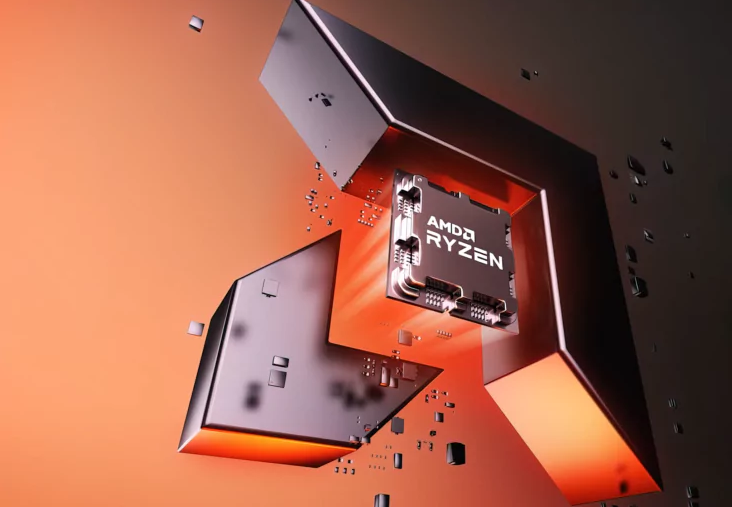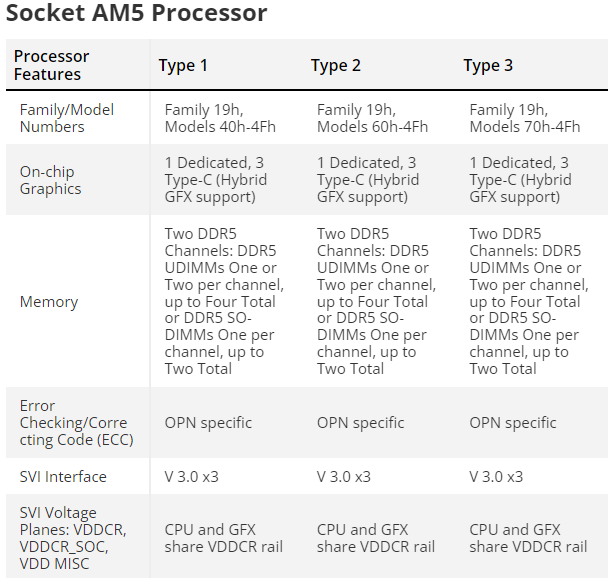News
The AM5 socket may see the release of AMD’s 6nm Rembrandt and 4nm Phoenix processors

The Ryzen 7000 (Raphael) series of processors has proven to be among the most powerful CPUs available. Only Ryzen 7000 processors, manufactured by AMD, are currently compatible with the AM5 socket. It’s possible, but, that will change shortly. AMD’s Rembrandt and Phoenix APUs could move from mobile to desktop, giving the AM5 socket two new tenants, according to a table from the Gigabyte hack last year, (which we recommend you pour a bit of salt over).
According to the rumours, there will be three distinct AM5 socket Ryzen processor models. These are all members of the 19h Family of AMD microprocessors, which includes the Zen 3, Zen 3+, and Zen 4 chips. Type 2 (Models 60h-6Fh) clearly denotes the Ryzen 7000 series, as the “A60F12” CPU ID is shared by all Zen 4-based processors. Type 2 was immediately identifiable by its features, such as its 28 PCIe lanes.
Models 40h-4Fh of the Type 1 processors and Models 70h-7Fh of the Type 3 processors are not yet available to the public. Type 1 is likely to be the recently announced Ryzen 6000 series (Rembrandt), while Type 3 is likely to be the recently announced Ryzen 7040 series (Phoenix) of mobile APUs from AMD. Rembrandt’s CPU ID is A40F41, while Phoenix’s CPU ID should be A70F71. Phoenix is aimed for ultra-thin laptops and is expected to hit the retail market, although we haven’t seen the chips in a public database to verify the CPU ID.
There are Zen 3+ processor cores and RDNA 2 graphics in the Rembrandt. Rembrandt is built by TSMC for AMD at the foundry’s 6nm level. When compared to Phoenix, this alternative is less intriguing. Phoenix utilises AMD’s cutting-edge Zen 4 CPUs and RDNA 3 graphics, as well as TSMC’s cutting-edge 4nm node. The chips also have AMD’s XDNA artificial intelligence (AI) technology, which it obtained when it bought Xilinx. Previous AMD desktop APUs, such the Ryzen 7 5700G, were limited to an octa-core design. AMD’s desktop APUs are a good fit for the recipe because mobile Rembrandt and Phoenix are limited to a maximum of eight cores and 16 threads.


DDR5 memory is supported by all three models, just like it is by Raphael. Each memory channel can accommodate up to two memory modules. For quite some time, customers have been wishing for a cutting-edge APU that can take use of DDR5 memory. It will be fascinating to see how much faster DDR5 memory helps AMD APUs, given their well-documented love of fast memory. However, buyers will be unable to take advantage of certain capabilities with Rembrandt and Phoenix, such as PCIe 5.0 connectivity. However, desktop users who want to take advantage of PCIe 5.0 SSDs will be unable to do so with Rembrandt and Phoenix because they only support PCIe 4.0.
Even growth and connection are restricted to some degree. Raphael provides 28 PCIe lanes, while both Rembrandt and Phoenix provide only 20 lanes, a difference of 29%. Of course, the three Ryzen processor families have distinct connectivity possibilities. The data reveals that although one Rembrandt model (Model 40h) has three USB 3.2 Type-C ports, the other one (Model 44h) provides two USB 4 ports and one USB 3.2 Type-C port. One USB 3.2 Type-C port and two USB 4 ports are included in the box with the Phoenix.













